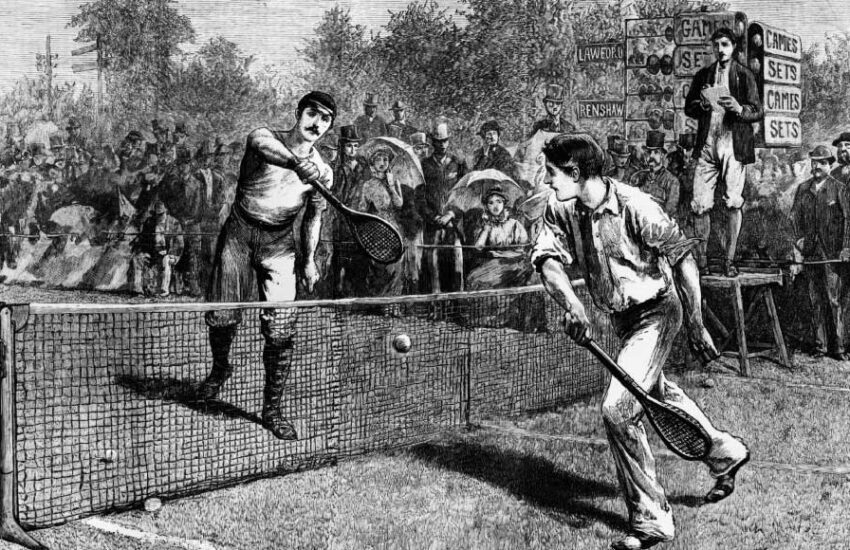The Annual Number of Grand Slam Tennis Tournaments
Every year, the tennis world is riveted by four major tournaments — the Australian Open, the French Open, Wimbledon, and the U.S. Open. These four colossal events are not just another tennis tournament; they represent the pinnacle of the sport. Globally, they are recognized as the Grand Slam tournaments or simply, the majors.
The Pinnacle of Tennis: The Majors
The Grand Slam tournaments hold immense significance due to several aspects including:
- Player Ranking Points: These tournaments contribute the highest points towards players’ global rankings. The outcome of these tournaments can drastically change the professional standing of the participants;
- Prize Money: The Grand Slam tournaments are known for providing the most attractive financial rewards. Winning or even advancing to the later stages of these tournaments can prove to be a significant boost to the participants’ earnings;
- Media Attention: Worldwide, these tournaments get the highest coverage, boosting the players’ visibility and fame. Each match’s every move is scrutinized and analyzed by media outlets around the globe.
Besides, these tournaments are celebrated for their competitive intensity:
- Level of Competition: These tournaments attract the strongest competition, from rising stars to established champions. Participating in these events is a matter of pride and performance in these can shape a player’s career trajectory;
- Size of the Competitors Pool: An impressive number of competitors participate in these tournaments, further intensifying the level of competition;
- Match Length: Particularly for men’s events, matches at Grand Slams are known to be grueling endurance tests. This is largely due to the best-of-five sets format, as opposed to the best-of-three in most other tournaments. These lengthy, physically and mentally challenging encounters are a spectacle to behold and are a unique highlight of the majors.
Who Holds the Reigns of the Grand Slam Tournaments?
The esteemed International Tennis Federation (ITF) is the governing body overseeing the annual Grand Slam tournaments. The men’s and women’s tour organizing bodies, commonly recognized as the Association of Tennis Professionals (ATP) and the Women’s Tennis Association (WTA), while influential, do not directly orchestrate these tournaments.
However, the ATP and WTA play a significant role as they attribute ranking points to the players according to their tournament performance. This vital contribution aids in shaping the global standings of tennis players.
The Indispensable Role of the ITF, ATP, and WTA
Understanding the distinct roles of these three governing bodies can provide invaluable insights into the structure of professional tennis:
- International Tennis Federation (ITF): The ITF acts as the overarching governing body for tennis globally. It carries the responsibility of supervising the four Grand Slam events held annually across different continents. Their duties also include maintaining the rules of tennis, ensuring fair play, and promoting tennis as a sport worldwide;
- Association of Tennis Professionals (ATP) and Women’s Tennis Association (WTA): These organizations are central to the men’s and women’s professional tennis circuits, respectively. While they don’t directly oversee the Grand Slams, they confer ranking points based on players’ performance in these tournaments. The points awarded then feed into a player’s global rank, impacting their seeding in future tournaments and their professional standing in the world of tennis.
The symbiotic relationship between the ITF, ATP, and WTA shapes the smooth functioning of Grand Slam tournaments and other major tennis events.
The Grand Timeline of Grand Slam Tournaments
The world of tennis comes alive with a distinct rhythm, a sequence that is meticulously planned to ensure the seamless progression of the sport’s most significant tournaments – the Grand Slam tournaments. These eminent events unfurl over different periods in a calendar year, with each located in a different part of the world.
An Annual Gala of Tennis
Here’s a glimpse into the annual schedule of the Grand Slam tournaments:
- The Australian Open: The first Grand Slam of the year, the Australian Open, sets the ball rolling within the pleasant summer backdrop of January in Melbourne, Australia. The tournament serves as the launch pad for the tennis season, offering the players a chance to start their competitive year on a high note;
- The French Open: Next, the action shifts to the clay-courts in the springtime atmosphere of Paris, France. Running from late May to early June, the French Open or Roland Garros presents a unique challenge with its slow-playing surface and five-set matches without a tiebreak;
- Wimbledon: As summer sets in, the Wimbledon Championships showcase the classic allure of tennis on the grass courts. From late June to early July, the tennis world converges on England for this prestigious contest that celebrates tradition and sportsmanship;
- The U.S. Open: Rounding off the Grand Slam calendar is the U.S. Open. Running from August to September, this hard-court spectacle takes place amid the bustling cityscape of New York, USA, as summer transitions into fall.
Spanning approximately two weeks, each of these tournaments presents numerous thrilling encounters and riveting narratives, providing ample excitement and suspense to keep tennis enthusiasts hooked.
The Prestigious Iterations of a Tennis Grand Slam
The game of tennis is alight with numerous accomplishments, awards, and honors, each distinguished by its unique set of rules and significance. Among them, the term “Grand Slam” holds a special place due to its rarity, difficulty, and highly coveted status.
The Variations of Grand Slam Glory
Understanding a ‘Grand Slam’ necessitates an awareness of its different connotations in the tennis world:
- Calendar-Year Grand Slam: This accolade is reserved for the unique achievement of a player or a doubles pair winning all four major championships — Australian Open, French Open, Wimbledon, and the U.S. Open — within the same calendar year. Although rare, this triumphant progression remains the holy grail for most tennis players;
- Non-Calendar-Year Grand Slam: A slightly different permutation of the Grand Slam, this award recognizes the accomplishment of winning four consecutive major championships outside of a calendar year. The time-frame might stretch over two calendar years, but the feat remains equally commendable;
- Career Grand Slam: This honor recognizes a player who has won all four Grand Slam tournaments over the course of their career. It does not demand a chronological win, but underlines a consistent level of brilliance across different years and playing conditions;
- Doubles Grand Slam: This achievement can be earned by a player who captures the four majors within a calendar year in either Men’s, Women’s, or Mixed Doubles, regardless of their partner. It also includes players who win the titles with different partners.
The designation of Grand Slam is not only a mark of supreme skill and indomitable spirit, but also an enduring reflection of a player’s contribution to the sport.
The Jewels of The Tennis Crown: A Closer Look at The Four Grand Slam Tournaments
Every year, tennis aficionados around the globe anxiously await the spectacle that is the Grand Slam tournaments. These events, with their rich histories and distinguished reputations, are the pillars of professional tennis. Let’s delve into the fascinating narratives of these four tennis titans.
The Australian Open: A Summer Spectacle Down Under
Starting the Grand Slam circuit is the Australian Open, an annual tournament held at Melbourne Park in Melbourne city. This globally-celebrated championship started with the men’s tournament in 1905 and welcomed female participants in 1922. Until 1988, the event was hosted across multiple Australian cities. However, the organizers decided to anchor it in Melbourne Park, earlier known as Flinders Park. The shift to jet travel has alleviated the previous issue of fewer international participants owing to the extensive travel demands.
French Open: Where Clay Courts Turn Battles into Ballets
Known officially as the Championnats Internationaux de France de Tennis, the French Open is an iconic event celebrated on the picturesque clay courts of Stade Roland-Garros. The inaugural men’s tournament was held in 1891, with the women’s singles being introduced in 1897. Clay courts were installed in 1928 when the tournament moved to its current venue, adding a unique layer of difficulty and a distinctive flavor to the tournament.
Wimbledon: An Iconic Tribute to Tradition
The Wimbledon Championships, held at the All England Club in London, is the world’s oldest tennis tournament and the only Grand Slam still contested on natural grass courts. This prestigious event started in 1877 on a croquet ground, with the inaugural women’s competition and men’s doubles taking place in 1884. A timeless tradition from Wimbledon’s Victorian era persists today, requiring all competitors to don white attire, making it a unique blend of sportsmanship and elegance.
U.S. Open: A Hardcourt Test of Mettle in the Big Apple
Finally, the U.S. Open marks the culmination of the Grand Slam calendar. This esteemed tournament, held at the USTA Billie Jean King National Tennis Center in Flushing Meadows, New York, offers competitions in men’s and women’s singles, men’s and women’s doubles, plus mixed doubles. Since 1978, all matches have been played on hard courts, adding a different dynamic and challenge to the game.

Ranking the Grand Slam Tournaments: The Struggle for Top Spot
Deciding the most popular Grand Slam tournament can be challenging as opinions often vary depending on aspects ranging from personal preferences to cultural inclinations. To present a comprehensive analysis, we will consider three key factors: Prize money, media hits, and television ratings.
The Money Game: Tournament Prize Purses
The padding of the champion’s bank account is a significant aspect of any tournament. Here’s how the Grand Slam events stack up:
- Australian Open: $2.4 million;
- Wimbledon: $1.8m million;
- U.S. Open: $1.8 million;
- French Open: $1.64 million.
Clearly, the Australian Open takes precedence in terms of monetary rewards.
The Media Landscape: Spotlight on the Court
The amount of media attention a tournament attracts indicates its popularity among tennis enthusiasts and the wider audience. According to a survey conducted by Factiva, the media hits for the tournaments are in the following order:
- Wimbledon;
- U.S. Open;
- Australian Open;
- French Open.
Wimbledon, with its rich history and tradition, tops the list.
Summing Up the Grand Slam Popularity Contest
While it is essential to note that popularity can be subjective and varies across different demographics, the common consensus, considering the aforementioned metrics, suggests a close contest between the four majors. While the Australian Open leads in terms of prize money, Wimbledon takes the crown for media hits, and the French and U.S. Open reign supreme regarding television ratings.



